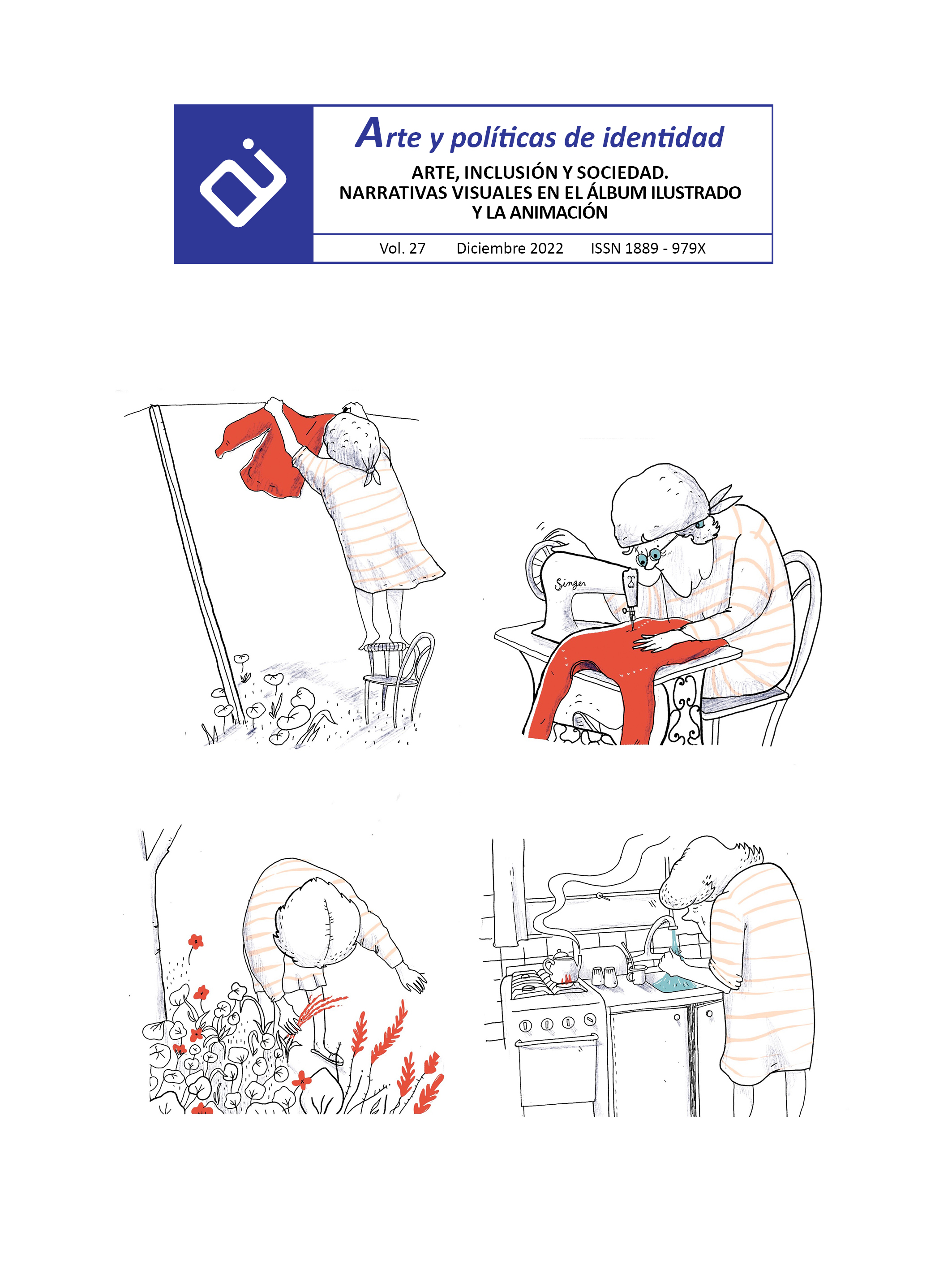Imagen-tiempo y cine lento contemporáneo. Proximidad con la tradición de la imagen estática
Resumen
En la producción cinematográfica actual existe un tipo de cine que presenta ciertos paralelismos con la imagen estática y que, debido a sus características, ha sido denominado por varios autores cine lento. En el análisis de los orígenes y atributos del mismo, en primer lugar se parte de los conceptos cinematográficos introducidos por Gilles Deleuze y las diferencias que plantea entre la imagen-movimiento y la imagen-tiempo en el cine. La imagen-movimiento está relacionada principalmente con el cine clásico, basado en el montaje y la acción constante, mientras que la imagen-tiempo, por otra parte, presenta un tipo de cine que, según este autor, surge a partir de la Segunda Guerra Mundial, y cuyas características están relacionadas con la duración prolongada de los planos y su independencia en relación al montaje, además del estatismo y la quietud. Se exponen también las posibles causas del surgimiento de esta imagen cinematográfica y su evolución en las siguientes décadas a través de varios autores y movimientos artísticos. Dicho análisis, finalmente, permite plantear una hipótesis sobre el parentesco entre este tipo de imagen cinematográfica y la tradición de la imagen fija.
Descargas
-
Resumen538
-
pdf688
Citas
Aumont, J. (1997). El ojo interminable: cine y pintura. Paidós.
Balázs, B. (1952) Theory of the film (Character and growth of a new art). Dennis Dobson Ltd.
Baños Fidalgo, F. (2013). Tiempo lento en el cine y el vídeo contemporáneo [Tesis Doctoral, Universidad Complutense de Madrid].
Bazin, A. (2016). ¿Qué es el cine? Rialp.
Bergson, H. (1977). Materia y memoria. Alianza Editorial.
Bonitzer, P. (2007). Desencuadres: pintura y cine. Santiago Arcos Editor.
Bordwell, D. (1988). Ozu and the poetics of cinema. Princeton University Press.
Burch, N. (1979). To the distant observer, form and meaning in the Japanese cinema. Berkeley, University of California Press.
De Luca, T., y Barradas Jorge, N. (2016). Slow Movies. Edinburg University Press.
Deleuze, G. (1987). La imagen-tiempo. Paidós.
Evans, Jonathan St. B. T. y Frankish, K. (2009). In two minds: Dual Processes and Beyond. The Duality of mind. Oxford University Press.
Ezcurdia, J. (2015). La materia-imagen bergsoniana y la filosofía del cine de Deleuze. Kalagatos, Revista de Filosofía, 12(24), 109-150.
Flanagan, M. (2012). Slow Cinema: Temporality and Style in Contemporary Art and Experimental Film [Tesis Doctoral. University of Exeter].
Jaffe, I. (2014). Slow Movies, countering the cinema of action. Columbia University Press.
Koch, S. (1976). Andy Warhol Superstar. Anagrama.
Kovács, A. B. (2013). The cinema of Béla Tarr, The circle closes. Columbia University Press.
Kracauer, S. (1960). Theory of film, The redemption of Physical reality. Oxford University Press.
Ortiz, A. y Piqueras, M. J. (2004). La pintura en el cine: Cuestiones de representación visual. Paidós.
Oter, J. (2013). Formas de inmovilidad en la imagen cinematográfica [Tesis Doctoral. Universidad del País Vasco].
Sánchez-Biosca, V. (1991). Teoría del montaje cinematográfico. Filmoteca de la Generalitat Valenciana.
Sloman, S. A. (1996). The Empirical Case for Two Systems of Reasoning. Psychological Bulletin, 119(1), 3-22. https://doi.org/10.1037/0033-2909.119.1.3
Tarkovsky, A. (1996). Esculpir en el tiempo. Rialp.
VVAA. (2016). Slow cinema. Edinburgh University Press.
Works published in this journal are subject to the following terms:
- The Service of Publications from the University of Murcia (publishing house) keeps the published works’ copyrights, and favors and allows the reuse of these works under the license indicated in point 2.
- Works are published in the journal’s online edition under the license Creative Commons Reconocimiento-NoComercial-SinObraDerivada 3.0 España(texto legal). They can be copied, used, disseminated, transmitted and publicly exhibited, as long as: i) the author and original source of publication are cited (journal, publishing house and work’s URL); ii) they are not used for commercial purposes; iii) the existence and specifications of this license are mentioned.
3. Conditions for auto-file. It is allowed and encouraged that authors share electronically their pre-print version (the pre-reviewed version) and /or post-print version (the reviewed and accepted version) of their Works before the publication, since it promotes its circulation and dissemination. RoMEO color: green.










